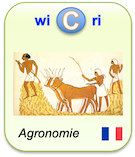Dynamic properties of visual evoked potentials in the tectum of cartilaginous and bony fishes, with neuroethological implications
Identifieur interne : 001230 ( Istex/Checkpoint ); précédent : 001229; suivant : 001231Dynamic properties of visual evoked potentials in the tectum of cartilaginous and bony fishes, with neuroethological implications
Auteurs : Theodore H. Bullock [États-Unis] ; Michael H. Hofmann [Allemagne] ; John G. New [États-Unis] ; Frederick K. Nahm [États-Unis]Source :
- Journal of Experimental Zoology [ 0022-104X ] ; 1990.
Abstract
We have extended the study of Bullock ('84), who reported on visually evoked potentials (VEP) in the tectum of 10 species of elasmobranchs, by adding further stimulus regimes, multichannel recording, and additional taxa, particularly addressing the question of flicker fusion frequency by electrophysiological signs in central processing centers. Using principally the guitar‐fish, Platyrhinoidis and Rhinobatos, and the bass, Paralabrax, with some additional data from 32 other species, the findings support the following conclusions: 1 Latency of the first main VEP peak, a sharp surface negativity, to a diffuse white flash of submaximal intensity while the eye is moderately light adapted varies from < 20 ms in some teleosts to > 120 ms in agnathans, holocephalans, and some rays. Among the elasmobranchs tested, the sharks are generally faster than the rays. Among the teleosts tested, some species are at least three times slower than others. There is little overlap between the fastest elasmobranchs and the slowest teleosts. 2 After the first VEP peak, later components are more diverse than the classic descriptions of one late surface‐negative hump; they may include also sharp peaks, slow humps, and oscillatory waves extending out to > 1 s postflash. These are highly labile, variable and similar to OFF responses after a long light pulse. All these components occur already in the retina, whether the optic nerve is intact or cut. Many records do not show the late components; in the same preparation, some tectal loci may and others may not. 3 Ongoing activity (the micro‐EEG, over all frequency bands) is depressed between early and late waves after a flash as well as during a long light pulse. 4 Repeated flashes above a few per second do not so much cause fatigue of the VEPs as reduce or prevent them by a sustained inhibition; large late waves are released as a rebound excitation any time the train of flashes stops or is delayed or sufficiently weakened. 5 Repeated flashes depress first the early waves; later waves follow 1:1 up to an upper following frequency (UFF) of ∼13 Hz in the guitarfishes at optimal intensity and light adaptation (15–17°C). A transition zone of gradual fusion from 15 to 30 Hz is marked by sputtering or irregular sharp VEPs; above a lower fusion frequency (LFF) of 30–40 Hz, the flash train becomes equivalent to steady light. 6 These numbers in different teleost species vary widely but are generally higher; in the sand bass, UFF and LFF are ∼35 and 50 Hz; in tuna, the LFF can be well above 60 Hz. 7 The attempt to correlate the wide differences observed with ethology is severely limited by our meager knowledge of the use of vision by these species. A phylogenetic factor or character of the class appears to limit the performance. Superimposed on this may be a correlation between habit of life and the three dynamic measures: first wave latency, VEP flicker following, and fusion frequencies. The tentative correlates are, in the extreme, life‐styles that are more sluggish vs. ones in which vision during fast movement is important.
Url:
DOI: 10.1002/jez.1402560519
Affiliations:
Links toward previous steps (curation, corpus...)
Links to Exploration step
ISTEX:134812E8783AA9B4B3D85ADE48B145E9917D2E34Le document en format XML
<record><TEI wicri:istexFullTextTei="biblStruct"><teiHeader><fileDesc><titleStmt><title xml:lang="en">Dynamic properties of visual evoked potentials in the tectum of cartilaginous and bony fishes, with neuroethological implications</title><author><name sortKey="Bullock, Theodore H" sort="Bullock, Theodore H" uniqKey="Bullock T" first="Theodore H." last="Bullock">Theodore H. Bullock</name></author><author><name sortKey="Hofmann, Michael H" sort="Hofmann, Michael H" uniqKey="Hofmann M" first="Michael H." last="Hofmann">Michael H. Hofmann</name></author><author><name sortKey="New, John G" sort="New, John G" uniqKey="New J" first="John G." last="New">John G. New</name></author><author><name sortKey="Nahm, Frederick K" sort="Nahm, Frederick K" uniqKey="Nahm F" first="Frederick K." last="Nahm">Frederick K. Nahm</name></author></titleStmt><publicationStmt><idno type="wicri:source">ISTEX</idno><idno type="RBID">ISTEX:134812E8783AA9B4B3D85ADE48B145E9917D2E34</idno><date when="1990" year="1990">1990</date><idno type="doi">10.1002/jez.1402560519</idno><idno type="url">https://api.istex.fr/document/134812E8783AA9B4B3D85ADE48B145E9917D2E34/fulltext/pdf</idno><idno type="wicri:Area/Istex/Corpus">001420</idno><idno type="wicri:explorRef" wicri:stream="Istex" wicri:step="Corpus" wicri:corpus="ISTEX">001420</idno><idno type="wicri:Area/Istex/Curation">001418</idno><idno type="wicri:Area/Istex/Checkpoint">001230</idno><idno type="wicri:explorRef" wicri:stream="Istex" wicri:step="Checkpoint">001230</idno></publicationStmt><sourceDesc><biblStruct><analytic><title level="a" type="main" xml:lang="en">Dynamic properties of visual evoked potentials in the tectum of cartilaginous and bony fishes, with neuroethological implications</title><author><name sortKey="Bullock, Theodore H" sort="Bullock, Theodore H" uniqKey="Bullock T" first="Theodore H." last="Bullock">Theodore H. Bullock</name><affiliation wicri:level="2"><country xml:lang="fr">États-Unis</country><placeName><region type="state">Californie</region></placeName><wicri:cityArea>Neurobiology Unit, Scripps Institution of Oceanography and Department of Neurosciences, School of Medicine, University of California, San Diego, La Jolla</wicri:cityArea></affiliation></author><author><name sortKey="Hofmann, Michael H" sort="Hofmann, Michael H" uniqKey="Hofmann M" first="Michael H." last="Hofmann">Michael H. Hofmann</name><affiliation wicri:level="1"><country xml:lang="fr">Allemagne</country><wicri:regionArea>Department of Anatomy, School of Medicine, University of Göttingen</wicri:regionArea><wicri:noRegion>University of Göttingen</wicri:noRegion><wicri:noRegion>University of Göttingen</wicri:noRegion></affiliation></author><author><name sortKey="New, John G" sort="New, John G" uniqKey="New J" first="John G." last="New">John G. New</name><affiliation wicri:level="2"><country xml:lang="fr">États-Unis</country><placeName><region type="state">Californie</region></placeName><wicri:cityArea>Neurobiology Unit, Scripps Institution of Oceanography and Department of Neurosciences, School of Medicine, University of California, San Diego, La Jolla</wicri:cityArea></affiliation></author><author><name sortKey="Nahm, Frederick K" sort="Nahm, Frederick K" uniqKey="Nahm F" first="Frederick K." last="Nahm">Frederick K. Nahm</name><affiliation wicri:level="2"><country xml:lang="fr">États-Unis</country><placeName><region type="state">Californie</region></placeName><wicri:cityArea>Neurobiology Unit, Scripps Institution of Oceanography and Department of Neurosciences, School of Medicine, University of California, San Diego, La Jolla</wicri:cityArea></affiliation></author></analytic><monogr></monogr><series><title level="j">Journal of Experimental Zoology</title><title level="j" type="abbrev">J. Exp. Zool.</title><idno type="ISSN">0022-104X</idno><idno type="eISSN">1097-010X</idno><imprint><publisher>Wiley Subscription Services, Inc., A Wiley Company</publisher><pubPlace>New York</pubPlace><date type="published" when="1990">1990</date><biblScope unit="volume">256</biblScope><biblScope unit="issue">S5</biblScope><biblScope unit="supplement">S5</biblScope><biblScope unit="page" from="142">142</biblScope><biblScope unit="page" to="155">155</biblScope></imprint><idno type="ISSN">0022-104X</idno></series><idno type="istex">134812E8783AA9B4B3D85ADE48B145E9917D2E34</idno><idno type="DOI">10.1002/jez.1402560519</idno><idno type="ArticleID">JEZ1402560519</idno></biblStruct></sourceDesc><seriesStmt><idno type="ISSN">0022-104X</idno></seriesStmt></fileDesc><profileDesc><textClass></textClass><langUsage><language ident="en">en</language></langUsage></profileDesc></teiHeader><front><div type="abstract" xml:lang="en">We have extended the study of Bullock ('84), who reported on visually evoked potentials (VEP) in the tectum of 10 species of elasmobranchs, by adding further stimulus regimes, multichannel recording, and additional taxa, particularly addressing the question of flicker fusion frequency by electrophysiological signs in central processing centers. Using principally the guitar‐fish, Platyrhinoidis and Rhinobatos, and the bass, Paralabrax, with some additional data from 32 other species, the findings support the following conclusions: 1 Latency of the first main VEP peak, a sharp surface negativity, to a diffuse white flash of submaximal intensity while the eye is moderately light adapted varies from < 20 ms in some teleosts to > 120 ms in agnathans, holocephalans, and some rays. Among the elasmobranchs tested, the sharks are generally faster than the rays. Among the teleosts tested, some species are at least three times slower than others. There is little overlap between the fastest elasmobranchs and the slowest teleosts. 2 After the first VEP peak, later components are more diverse than the classic descriptions of one late surface‐negative hump; they may include also sharp peaks, slow humps, and oscillatory waves extending out to > 1 s postflash. These are highly labile, variable and similar to OFF responses after a long light pulse. All these components occur already in the retina, whether the optic nerve is intact or cut. Many records do not show the late components; in the same preparation, some tectal loci may and others may not. 3 Ongoing activity (the micro‐EEG, over all frequency bands) is depressed between early and late waves after a flash as well as during a long light pulse. 4 Repeated flashes above a few per second do not so much cause fatigue of the VEPs as reduce or prevent them by a sustained inhibition; large late waves are released as a rebound excitation any time the train of flashes stops or is delayed or sufficiently weakened. 5 Repeated flashes depress first the early waves; later waves follow 1:1 up to an upper following frequency (UFF) of ∼13 Hz in the guitarfishes at optimal intensity and light adaptation (15–17°C). A transition zone of gradual fusion from 15 to 30 Hz is marked by sputtering or irregular sharp VEPs; above a lower fusion frequency (LFF) of 30–40 Hz, the flash train becomes equivalent to steady light. 6 These numbers in different teleost species vary widely but are generally higher; in the sand bass, UFF and LFF are ∼35 and 50 Hz; in tuna, the LFF can be well above 60 Hz. 7 The attempt to correlate the wide differences observed with ethology is severely limited by our meager knowledge of the use of vision by these species. A phylogenetic factor or character of the class appears to limit the performance. Superimposed on this may be a correlation between habit of life and the three dynamic measures: first wave latency, VEP flicker following, and fusion frequencies. The tentative correlates are, in the extreme, life‐styles that are more sluggish vs. ones in which vision during fast movement is important.</div></front></TEI><affiliations><list><country><li>Allemagne</li><li>États-Unis</li></country><region><li>Californie</li></region></list><tree><country name="États-Unis"><region name="Californie"><name sortKey="Bullock, Theodore H" sort="Bullock, Theodore H" uniqKey="Bullock T" first="Theodore H." last="Bullock">Theodore H. Bullock</name></region><name sortKey="Nahm, Frederick K" sort="Nahm, Frederick K" uniqKey="Nahm F" first="Frederick K." last="Nahm">Frederick K. Nahm</name><name sortKey="New, John G" sort="New, John G" uniqKey="New J" first="John G." last="New">John G. New</name></country><country name="Allemagne"><noRegion><name sortKey="Hofmann, Michael H" sort="Hofmann, Michael H" uniqKey="Hofmann M" first="Michael H." last="Hofmann">Michael H. Hofmann</name></noRegion></country></tree></affiliations></record>Pour manipuler ce document sous Unix (Dilib)
EXPLOR_STEP=$WICRI_ROOT/Wicri/Eau/explor/EsturgeonV1/Data/Istex/Checkpoint
HfdSelect -h $EXPLOR_STEP/biblio.hfd -nk 001230 | SxmlIndent | more
Ou
HfdSelect -h $EXPLOR_AREA/Data/Istex/Checkpoint/biblio.hfd -nk 001230 | SxmlIndent | more
Pour mettre un lien sur cette page dans le réseau Wicri
{{Explor lien
|wiki= Wicri/Eau
|area= EsturgeonV1
|flux= Istex
|étape= Checkpoint
|type= RBID
|clé= ISTEX:134812E8783AA9B4B3D85ADE48B145E9917D2E34
|texte= Dynamic properties of visual evoked potentials in the tectum of cartilaginous and bony fishes, with neuroethological implications
}}
|
| This area was generated with Dilib version V0.6.27. | |

